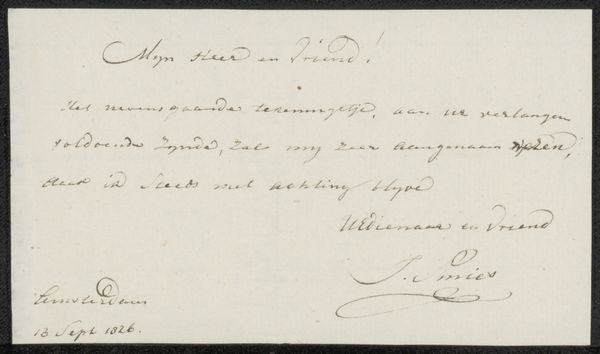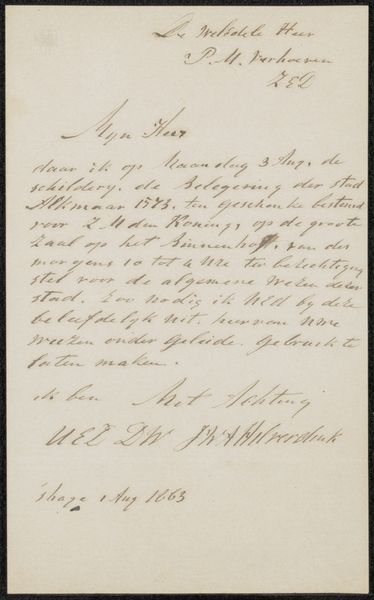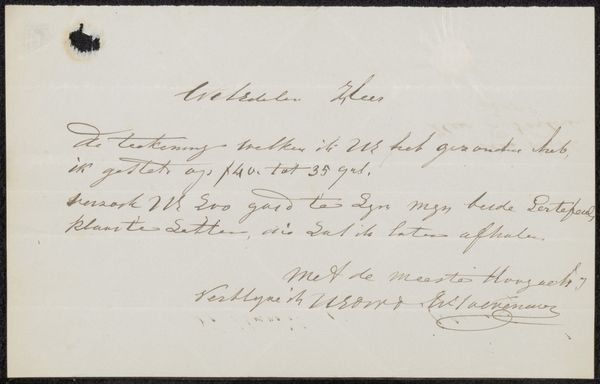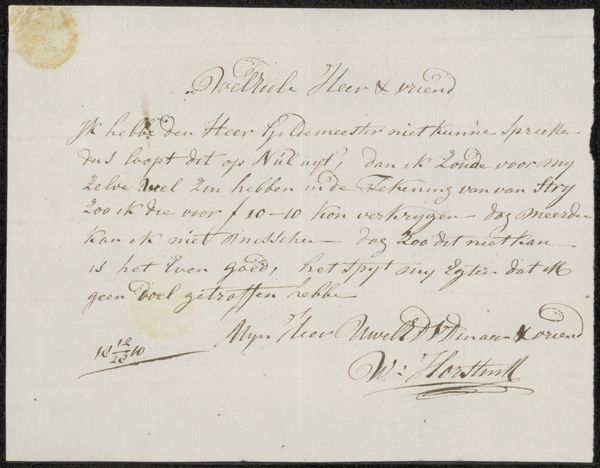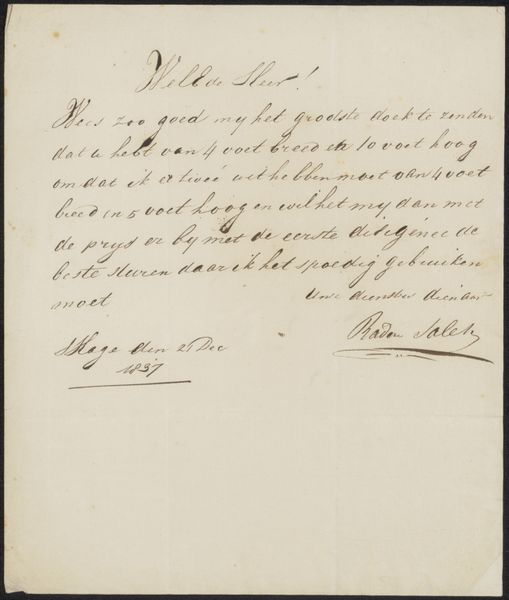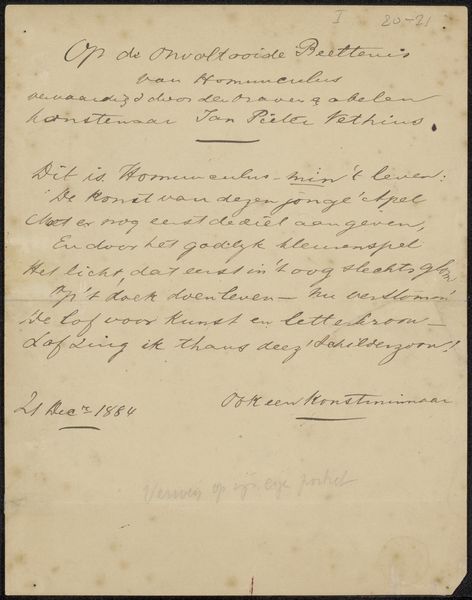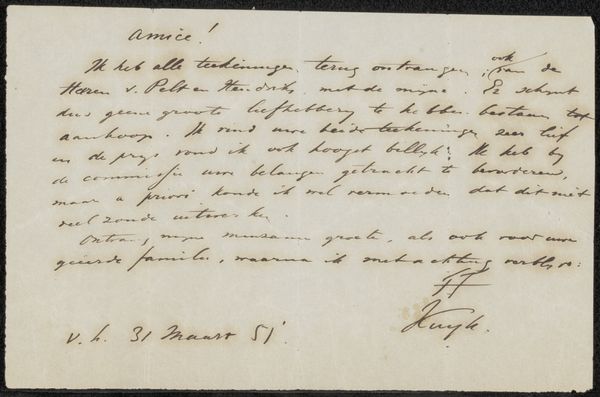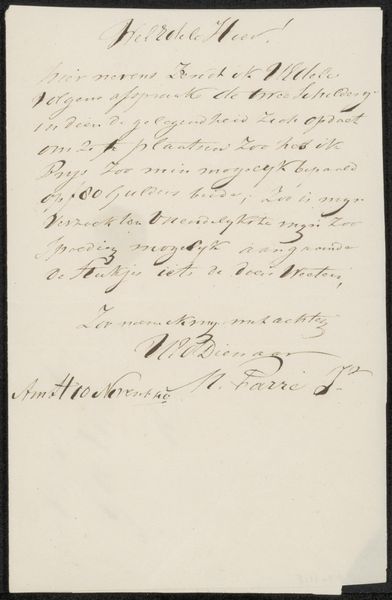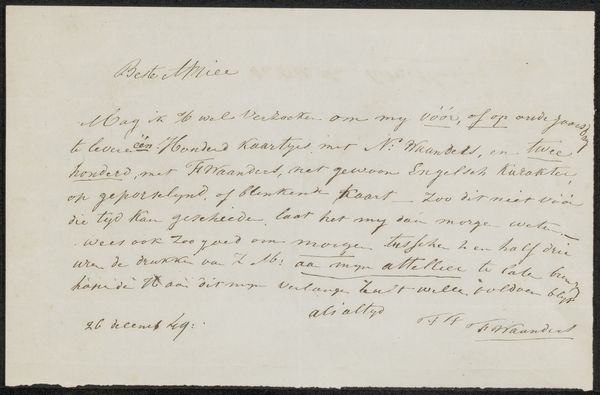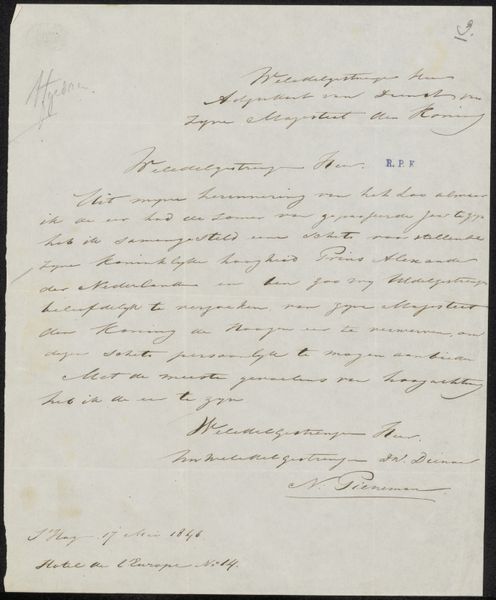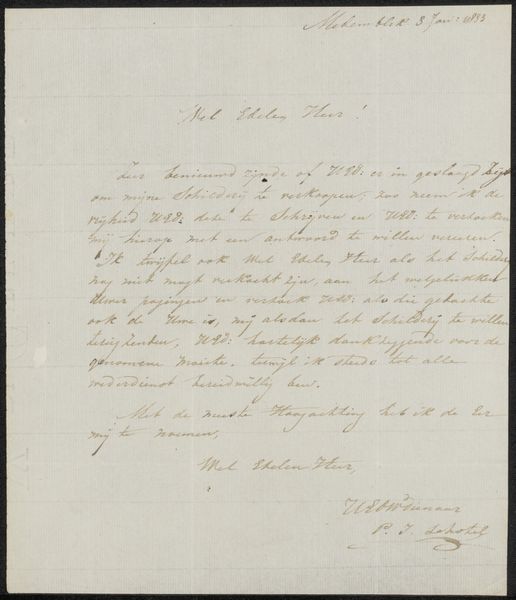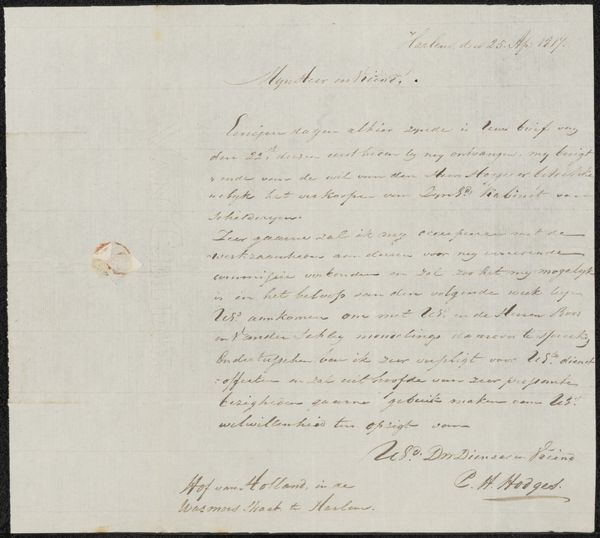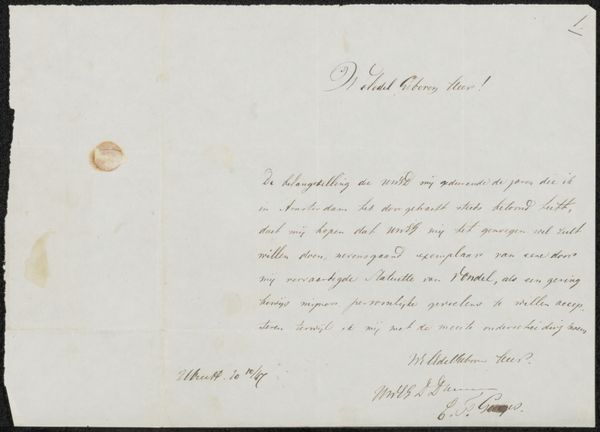
drawing, paper, ink
#
drawing
#
paper
#
personal sketchbook
#
ink
#
romanticism
#
calligraphy
Copyright: Rijks Museum: Open Domain
Curator: Here we have Pieter George Westenberg’s "Brief aan Adriaan van der Willigen," dating possibly from 1837 to 1839. It's a drawing in ink on paper, housed here at the Rijksmuseum. Editor: Oh, it’s a letter! There's something so wonderfully intimate about seeing someone's handwriting. It’s a tiny peek into another time. A feeling like I'm intruding upon some very personal communication. Curator: Intrusion is interesting to consider here. What makes this more than just casual correspondence is, of course, its material permanence— preserved now for nearly two centuries in the Rijksmuseum. It also speaks to artistic networks and patronage. This particular piece points towards Westenberg's interactions with other artists and collectors. The paper itself would have been carefully chosen, and the ink, meticulously prepared. Editor: Yes, absolutely. And look at the script— the controlled flourishes. It isn’t merely functional; it’s carefully calligraphic, artistic, each letter formed as a work of its own, I imagine writing something with the feeling like they’re doing dance. Curator: Precisely. The labor is evident, the slow and deliberate process of inscription. Each stroke required time and skill. You mentioned intrusion, and thinking about this process almost transforms it back into a private correspondence from its life in a gallery display. It also reveals hierarchies – art versus craft. We celebrate the artist, but perhaps overlook the paper maker or the ink producer whose efforts also contributed to this artwork. Editor: I'm pulled back into it—I can imagine the quiet of his study, the scratch of the pen on paper. Maybe I'm idealizing, but there is something captivatingly present in its simplicity. It’s almost melancholic, to see communication in this physical, unedited form. I wonder what Adriaan van der Willigen thought upon receiving it. Curator: The letter itself would have been part of a larger circuit of exchange. Art supplies, ideas, commissions... it speaks to how art was made, circulated, and valued in the 19th century. Now we can ponder not just Westenberg's artistic expression, but the material and economic conditions that made that expression possible. Editor: Absolutely, yes, and with that context in mind, I am able to view it with renewed appreciation!
Comments
No comments
Be the first to comment and join the conversation on the ultimate creative platform.
